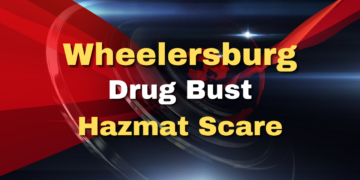As world tensions escalate, I’ve been asked to provide you with the most updated information on what is unfolding. The publisher has also asked me to contribute information regarding the possible impacts this may have on Southern Ohio. So, we will be adding regular updates gathered from news outlets around the world.
In the most recent developments, Russia has escalated its military posture by deploying advanced hypersonic missiles in Ukraine, signaling a stern warning to Western nations. The Kremlin’s use of these high-speed weapons confirms its readiness to respond forcefully to Western support for Ukraine.
Russia’s Deployment of Hypersonic Missiles
On November 21, 2024, Russian President Vladimir Putin announced the launch of a new hypersonic missile named “Oreshnik,” targeting a facility in Dnipro, Ukraine. This missile, capable of traveling at speeds up to Mach 10 (7,000 miles per hour), is designed to evade current Western missile defense systems.
The strike was framed as a direct response to Ukraine’s use of Western-supplied long-range missiles against Russian territories.
U.S. and NATO’s Response
In light of Russia’s actions, the United States and NATO allies have reiterated their support for Ukraine. U.S. officials have emphasized the importance of bolstering Ukraine’s defense capabilities, including the provision of advanced missile systems. NATO has convened emergency talks to address the implications of Russia’s hypersonic missile deployment and to assess collective defense strategies.
European Allies’ Preparations
European nations, particularly those in close proximity to the conflict, are taking proactive measures. The United Kingdom has declared its readiness to respond to any Russian aggression, with military officials stating that British forces could engage “tonight” if necessary.
Germany has been involved in strategic planning to address potential escalations, as evidenced by recent leaks of defense documents outlining responses to various scenarios.
Poland, sharing a border with Ukraine, has expressed heightened concerns over the threat of a global conflict, emphasizing the seriousness of the current situation. A brand new NATO base just opened in Poland this past week. That means Poland now has 2 NATO installations.
Assessing the Threat of Escalation
The deployment of hypersonic missiles by Russia marks a significant escalation in the conflict. These weapons, due to their high speed and maneuverability, pose a substantial challenge to existing missile defense systems. The international community is closely monitoring the situation, with diplomatic efforts underway to prevent further escalation. However, the risk of a broader conflict remains a pressing concern. Sky News
The United States has responded to Russia’s actions by deploying new strike weapons in Germany, including longer-range and hypersonic missiles. This move is intended to demonstrate the U.S.’s commitment to NATO and European defense.
In response, Russia has vowed to take “mirror measures,” potentially deploying new strike weapons to counter the U.S. deployment.
Understanding Hypersonic Missiles and Defense Challenges
Hypersonic missiles, such as Russia’s “Oreshnik,” travel at speeds exceeding Mach 5 (3,836.35 miles per hour), making them difficult to detect and intercept. Their maneuverability and low flight paths further complicate defense efforts. Traditional missile defense systems are currently ill-equipped to counter such threats effectively.
Potential Impact on the United States
Theoretically, if a hypersonic missile were launched from Russia toward Washington, D.C., it could reach the U.S. capital in approximately 30 minutes, depending on the missile’s speed and trajectory. Given the current limitations of missile defense systems against hypersonic threats, the U.S. would have a narrow window to detect, track, and attempt interception.
Overall, Russia’s deployment of hypersonic missiles in Ukraine has heightened global tensions, prompting the U.S. and its allies to reassess defense strategies and preparedness. The international community faces the dual challenge of addressing immediate security concerns while pursuing diplomatic avenues to prevent further escalation.




















































































